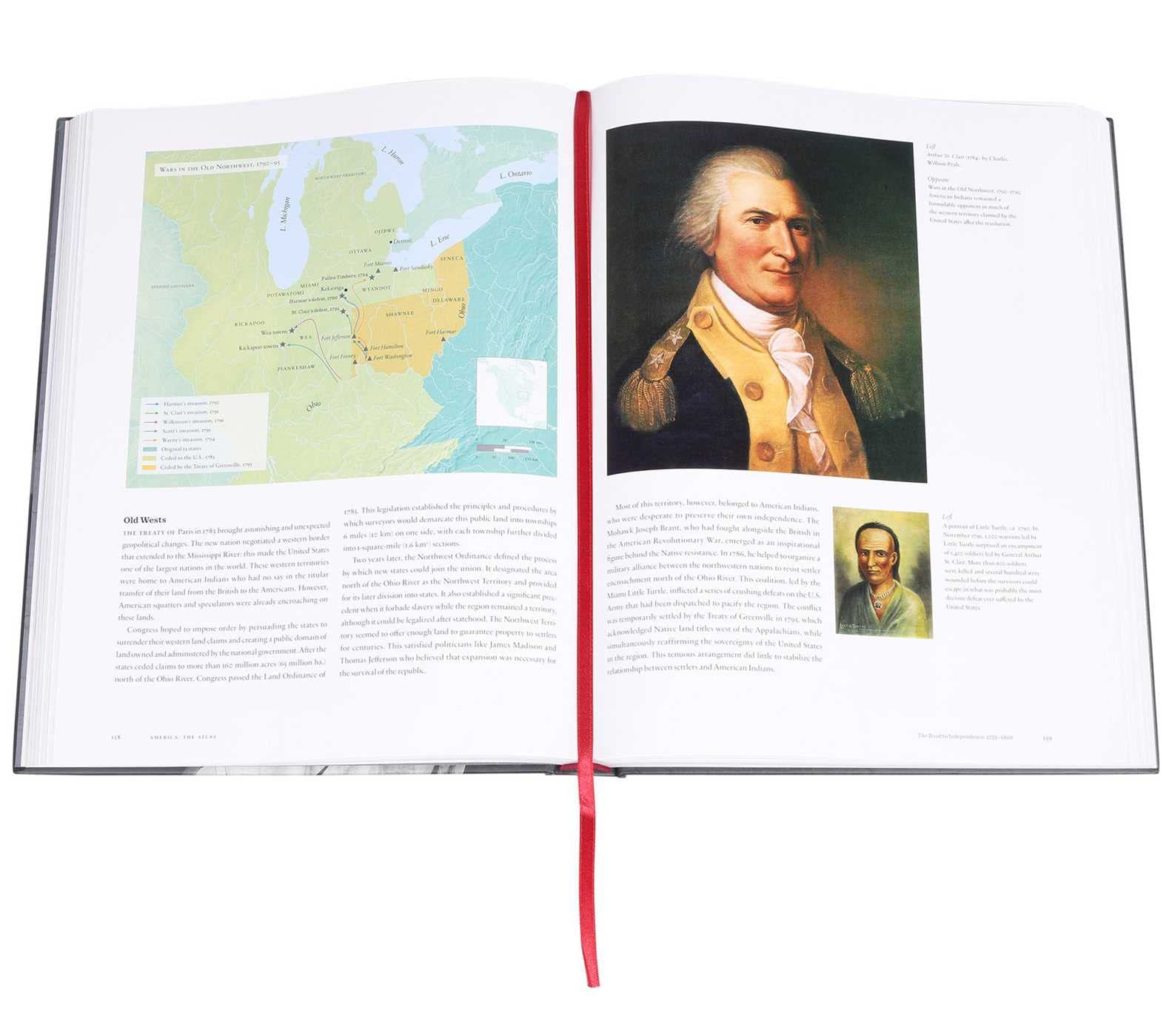America: The Atlas is a brand new book from the Smithsonian folks that takes us through the history of the Americas, integrating map study along the way. Its 384 pages focus on North America but also include plenty of information on Central and South America as well. The maps and images show us history, putting it in a geographical context, while the accompanying text explains it.
America: The Atlas differs from a lot of other history books in the inclusion of both historical and modern maps (including digital), really helping to orient readers about where events in history took place and how our history is all connected. It also covers both the exciting and positive parts of our history, and the shameful and just terrible parts. It doesn’t shy away from covering systemic violence and oppression, racism and othering. Because, if history doesn’t unsettle you in some way, you’re not reading the whole story. I do wish it focused on women a lot more, though.
This book is definitely a coffee table book in size, weight, and not-quite-enough depth, but there is also a lot of meat in its contents, taking the stance that our history is complicated, often problematic, and multifaceted. There is no one side of America, but rather countless sides. This book touches on some of the major ones.
The book covers the Americas’ history chronologically, starting with archaeology from about 50,000 years ago and continuing to the present day, even including COVID-19. It covers that history using maps, photographs, illustrations, paintings, drawings, and engravings (plus diagrams and plenty of modern digital maps) of as many corners of the Americas as possible, through the lens of notable events, migration, war, settlement, and changing social history.
Here’s how the sections break down:
- Chapter 1: Comparative Archaeology of the Americas: ca. 50,000 BC-ca. AD 1600
- Chapter 2: First Peoples of the Americas: ca. 50,000 BC-ca. AD 1400
- Chapter 3: Contact, Conquest, and Conflict: 1492-1638
- Chapter 4: Before Independence: 1639-1754
- Chapter 5: The Road to Independence: 1755-1800
- Chapter 6: Growth of a Nation: 1800-1860
- Chapter 7: Division and Amplification: 1860-1900
- Chapter 8: Preserving the Nation: 1900-1930
- Chapter 9: The Depression Era: 1930-1950
- Chapter 10: Questions of Progress: 1950 to Present
Pick up this book and turn to any chapter, and you’ll probably learn something you didn’t already know, such as the history of corn or how Mexico was divided up in the mid-1800s.
The book hits all the usual suspects, like the Revolutionary War, the Lewis and Clark expedition, the Civil War, immigration from other parts of the world, enslavement of humans, the World Wars, and the Great Depression, but it also covers some things less often focused on in American History classes, such as the variation in pre-conquest North American life, an integrated look at the different directions in which our country has gone, the Spanish settlements along the Pacific coast, the Hawaiian kingdom, and a map of massacres of Native Americans during the Gold Rush era. They even take Columbus down a peg or two or ten, making sure readers know that he wasn’t the first European to land in the Americas, and that he had pre-planned his conquest and violence. The book talks about Cortes as an invader rather than an explorer. There are informative maps of the country that address child labor. The book also gives a lot more attention to the history of Native Americans and their land than I ever had growing up, taking 1/4 or 1/3 of the book for this and related topics, tying that history in with other things happening at the time.
Because it covers a lot of ground chronologically, the book doesn’t delve too deeply in any one event or era, but it uses maps and other visuals to show us exactly what we think or know happened, including the when and the where. Modern visualizations juxtaposed with hundreds-of-years-old maps give us plenty to consider. Though there are plenty of historical maps included in this book, they make up less than half of the images, I’d say, with modern digital maps common (especially for the later periods) and plenty of other imagery and art included.
This book would be a valuable addition to any household—not as a definitive, thorough tome that covers all of the history of America, but as a companion to other books and media, since it really does touch on things in a visual way, especially through maps and geography, which many other books often do not.
The book includes some interesting and helpful extras. The front of the book has a two-sided fold-out map showing Lewis and Clark’s expedition on one side and an old railroad map on the other. The back of the book includes a nice chronology timeline, a map of Presidential birth places, information briefs about each of the 50 states detailing a piece of each’s history, a list of resources, and an index. And there’s even a handy ribbon bookmark built in, for marking your favorite map or for if you decide to read the book in order.
America: The Atlas sells for $29.99, which is a decent price for the quality of the book. It’s decently large, hard-covered, and filled with thick pages and color images. And its contents will inform and sometimes surprise you.
As the last sentence of the introduction says, “We hope you enjoy our mapping of America’s variegated story.” The more we study history, the more we learn that we don’t know. And the more stories we can add to our understanding of this place we live in. This book is a good addition to your history book library, and it’s also a great way of learning history if you already love maps.
The folks at the Smithsonian are passionate about history and curation, and this book reflects that. I hope it inspires you to dig deeper to learn more about our fascinating and complicated past.
Note: I received a copy for review purposes.





